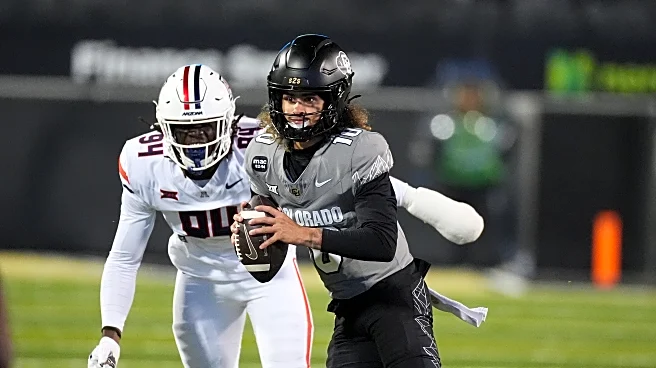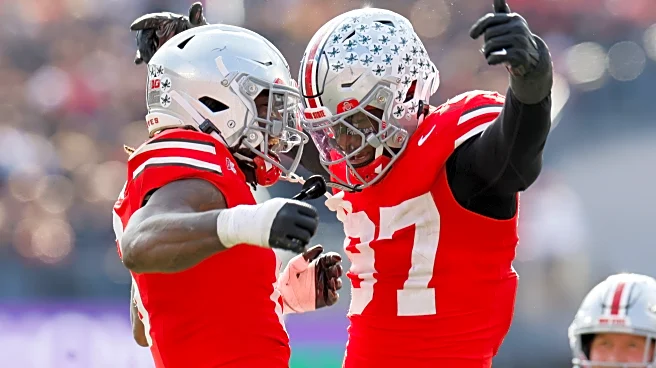What's Happening?
Colorado Buffaloes football coach Deion Sanders is navigating a challenging season with his team currently holding a 3-6 record. As the season progresses, questions arise regarding the audience size for
the Buffaloes' games. Despite the presence of notable players like Coach Prime's son and a Heisman winner, the team has not reached the viewership levels of top college football programs such as Alabama, Georgia, and Ohio State. Analyst Adam Breneman suggests a potential viewership floor of two million, but reports indicate that Colorado has not achieved this average. The Buffaloes are undergoing a rebuild phase, transitioning to true freshman Julian Lewis as quarterback, following the departure of key players Shedeur Sanders and Travis Hunter.
Why It's Important?
The viewership challenges faced by the Colorado Buffaloes highlight the competitive nature of college football, where audience engagement is often tied to team performance and star power. Programs like Alabama, Georgia, and Ohio State consistently draw large audiences due to their winning records and high-profile players. For Colorado, the decline in viewership could impact revenue and recruitment, as media exposure plays a crucial role in attracting talent and sponsorships. The situation underscores the importance of maintaining a successful program to sustain interest and financial support.
What's Next?
As Colorado continues its rebuilding efforts, the focus will be on developing new talent and strategies to improve performance and regain audience interest. Coach Deion Sanders faces the challenge of proving his ability to lead the team to success with a new roster. The upcoming games will be critical in determining the team's trajectory and potential to attract viewers. Stakeholders, including fans and sponsors, will be closely monitoring the team's progress and response to these challenges.
Beyond the Headlines
The decline in viewership for the Colorado Buffaloes may also reflect broader trends in sports media consumption, where audiences gravitate towards established winners and high-stakes matchups. This shift could influence how college football programs strategize their marketing and engagement efforts, emphasizing the need for competitive performance and star players to capture and retain audience interest.














